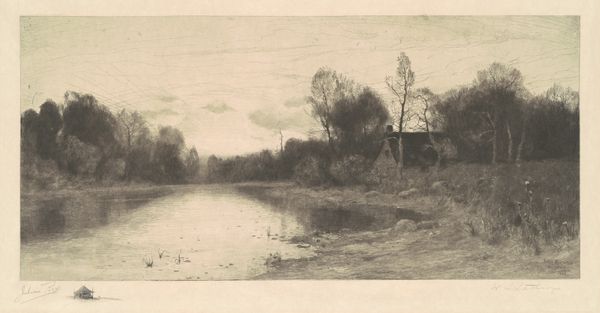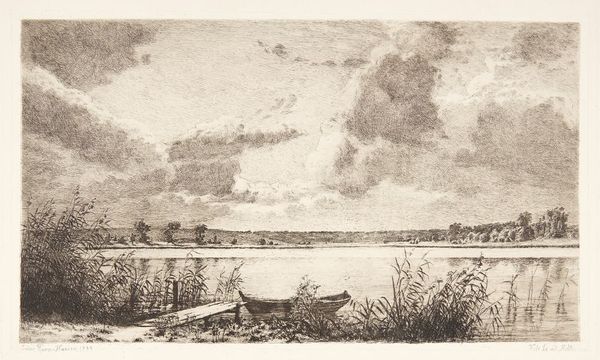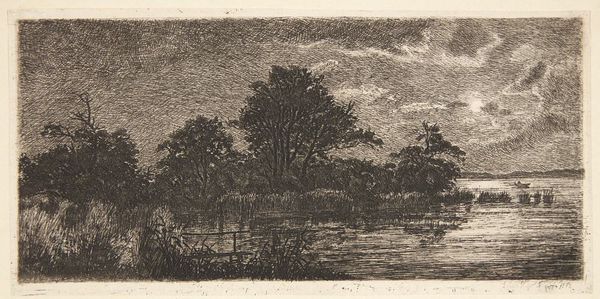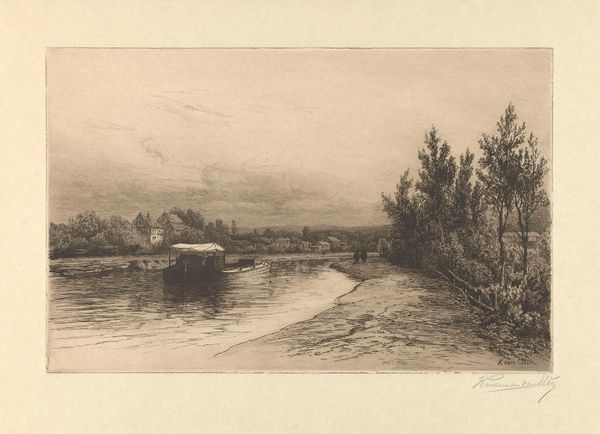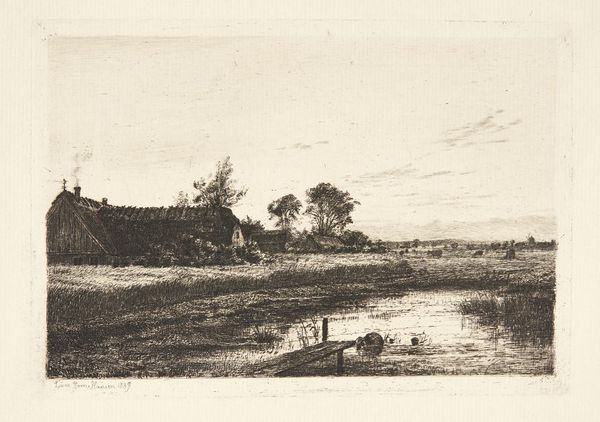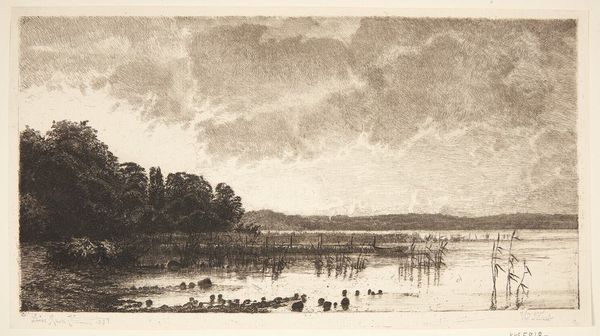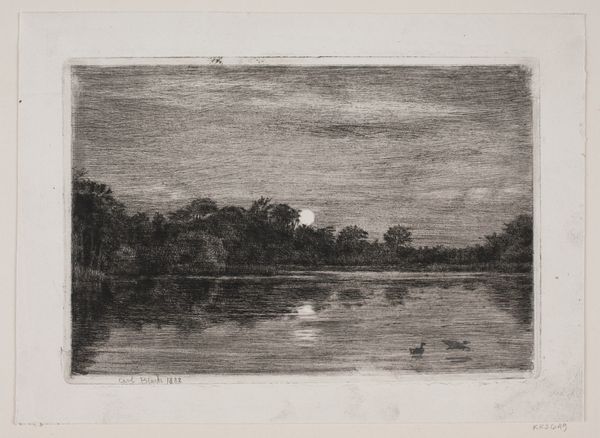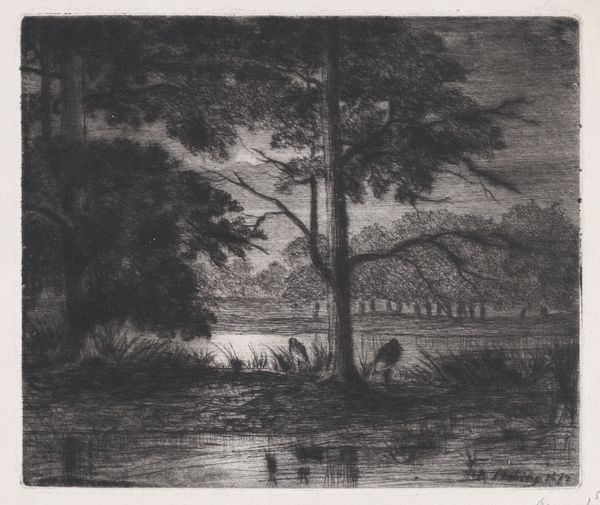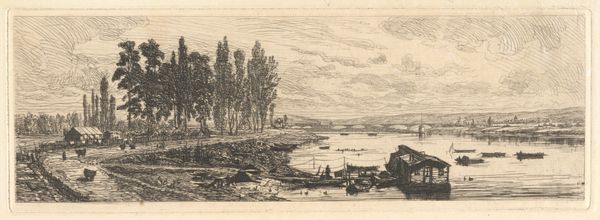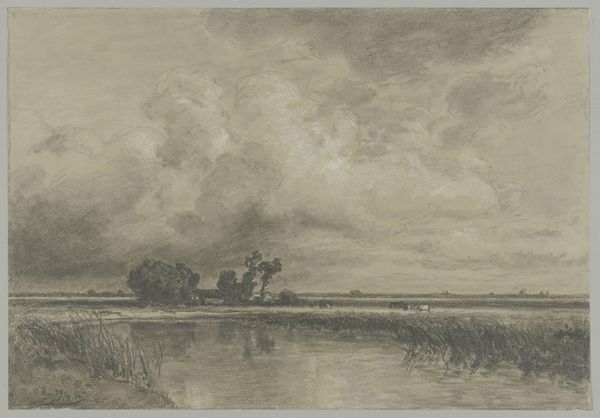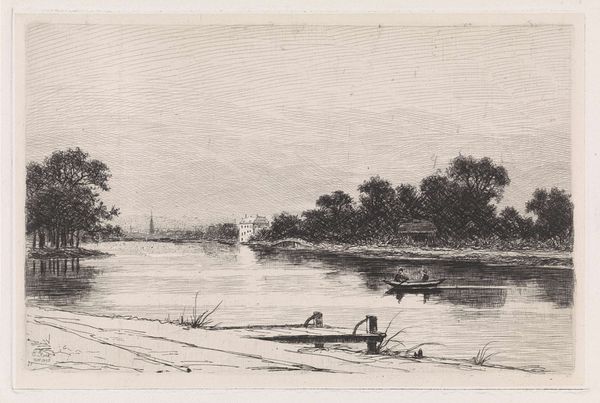
Dimensions: 160 mm (height) x 216 mm (width) (plademaal), 137 mm (height) x 197 mm (width) (billedmaal)
Curator: This etching by Carl Locher is entitled "Sommernat ved Hornbæk strand", or "Summer Night at Hornbæk Beach," and it dates to 1898. Editor: There's a certain stillness to it, a muted quality that’s rather captivating. The greyscale rendering adds to the overall quietness, and the textures feel soft, almost blurred, despite the medium. Curator: Yes, Hornbæk was known as a haven for artists and intellectuals seeking respite from Copenhagen, wouldn’t you agree that this captures that essence of serene escape? It reflects the late 19th-century trend among artists to depict leisure and nature, moving away from strictly academic or historical themes. Editor: Absolutely, that cultural backdrop is apparent, but it is also compelling as a study in light and shadow, isn’t it? Look how Locher uses varied line weights to create atmospheric perspective, dimming the landscape to suggest a fading twilight. Notice how the horizontal lines draw you to the distant figures by the pier. Curator: It does make me wonder, what significance might this pier have in the public imagination, given Hornbæk’s cultural resonance? Editor: Well, regardless, structurally, the vertical lines offer a stark contrast. More broadly, consider how Locher masterfully balances the density of the etched lines to achieve areas of striking darkness and luminous highlight. Curator: It certainly fits within the Impressionist movement by portraying everyday scenes and a momentary atmospheric condition. Prints like this were accessible and popular, playing a crucial role in democratizing art and allowing broader audiences to engage with contemporary artistic movements. Editor: Perhaps, the etching’s accessibility also relates to its elemental composition of land, water, and sky reduced to fundamental tones, and a minimal interplay of forms. It gives the viewer much interpretive room to consider. Curator: Ultimately, it seems that both Locher’s approach and Hornbæk’s social context created a popular iconography reflecting Denmark’s burgeoning cultural identity in the late 19th century. Editor: For me, I leave contemplating the quiet formal achievement on display here and thinking how simplicity can invite powerful emotions.
Comments
No comments
Be the first to comment and join the conversation on the ultimate creative platform.
